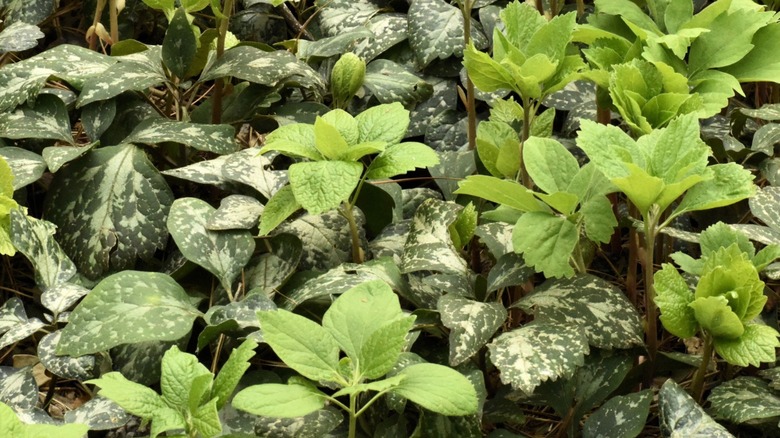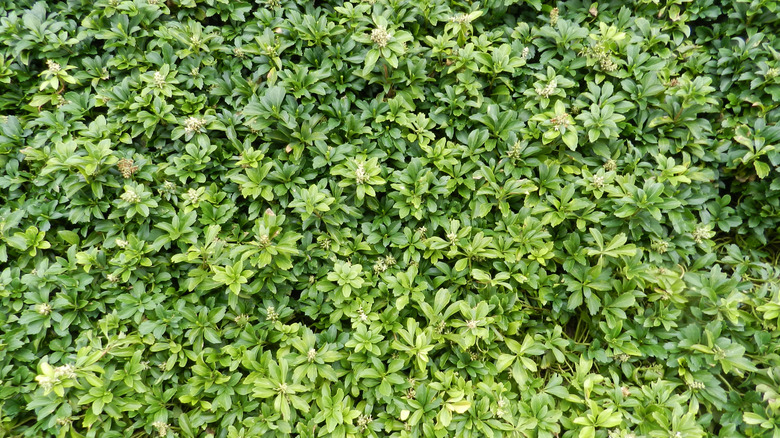The Eye-Catching Ground Cover That Will Thrive Under Trees For Years To Come
If you want a yard filled with trees and carpeted with lush green foliage, look no further than Allegheny spurge (Pachysandra procumbens). This is a low-maintenance plant that thrives in shade, making it the perfect ground cover under trees. Besides being a stunning addition to your landscape, Allegheny spurge helps prevent soil erosion and keeps weeds from growing. Another benefit of Allegheny spurge is that it encourages bees and other pollinators to stop by your yard. And luckily, it won't destroy your garden like some other ground covers.
The Allegheny spurge (or mountain pachysandra) is considered an endangered plant in Florida and Indiana. Because it's a native, non-invasive plant, choosing it as a ground cover is beneficial to the native plant ecosystem. As a bonus, it produces wonderfully fragrant flowers each spring. Ditch the mowing and weeding and instead add a luscious bed of leaves to your garden by planting mountain pachysandra (or another ground cover that loves shade). If you do choose this gorgeous plant as your ground cover, there are a few things you'll need to know before you can successfully add it to your landscape.
How to grow Allegheny spurge
While Allegheny spurge is easy to grow and maintain, choosing the right location and taking the time to learn how to prepare for Pachysandra are both crucial if you want your plant to thrive. USDA growing zones 4 to 9 are ideal places to grow Pachysandra, and if you have trouble growing other plants under your tree, chances are it's the perfect home for this ground cover.
It can take up to three years for a full cover to establish itself under a tree. Still, make sure you place your plants 6 to 12 inches apart. You want to foster a natural cover with room for the roots and leaves to spread out as they mature. While Pachysandra loves moist soil, avoid soggy soil to keep root rot from damaging your plants. Once the plants are fully established, they're pretty low-maintenance, unless your area is undergoing a particularly dry spell. Apply a slow-release fertilizer early each spring and prune the plants to encourage a full, dense ground cover.

